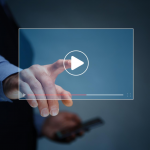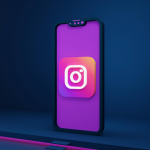Ever wondered why certain words or phrases leave you scratching your head? Well, you’re not alone. We’ve all been there, caught in the maze of language, trying to decipher meanings.
In this article, we’ll delve into the art of explanation, breaking down complex concepts into digestible bits. We’ll guide you on how to unravel meanings, making language less intimidating and more accessible.
So, whether you’re a language enthusiast, a curious reader, or someone seeking to expand your vocabulary, this is your go-to guide. Stay tuned as we explore the fascinating world of ‘explaining meaning’.
The Complexity of Language
Language, in its essence, is a rich tapestry interwoven with meanings, intents, dialects, and cultural nuances. It’s like an intricate puzzle where every word has a specific purpose. The challenge? Noticing the depth and deciphering the patterns that tie everything together.
Understanding phrases or sentences is like unlocking a secret door. It first seems complex due to a whole host of factors. These factors often present themselves as unique traits such as the language’s structure, the cultural contexts in which it’s used, evolving slang, and even technology.
Evolution of language, for example, often presents us with new words, adapted meanings, and even whole spectrums of communication. Let’s look at technology for instance. Take ‘Link in Bio‘ – a term that’s risen to prominence thanks to the surge of social media platforms. If you’re not familiar with this lingo, it may seem puzzling. But as an avid social media user, you know that it’s your passport to more information about someone’s post, a brand, a product, or a service.
Similarly, the term ‘Video funnel‘ has commanded attention in modern advancements and usage. It’s part of today’s digital marketing vernacular, derived from the content marketing strategy involving the production and publishing of video content aimed at guiding potential customers or followers down the path to a purchase or commitment.
Nevertheless, language is not meant to be an insurmountable barrier. To understand its depth and derive meaning, you’ve got to consider a myriad of factors — context, tone, the speaker’s background, and more. In a sense, it’s about taking smaller, manageable bites of a larger entity.
The journey of learning and interpreting language, thus, becomes a voyage of discovery. One that consistently offers opportunities to learn, adapt, and grow. To gain a unique insight into language and its multifarious facets, you must persistently dive deeper, searching for that potential meaning in every word and sound. After all, language isn’t just about speaking or writing; it’s about understanding and connecting.
Deciphering Meanings
Diving deeper into language can unveil an intricate web of meanings. You’ll find that every word, every phrase carries a purpose. The challenge is deciphering these meanings and that’s where your journey begins.
Imagine, you’re perusing a sentence on social media. A simple, innocuous comment, but the meaning isn’t clear. Is it slang, a cultural reference, or a new-age phrase? You’re not alone in this quandary.
- In this digital age, language continually morphs within the confines of social platforms. Then enters the jargon: “Link in Bio” or “Video Funnel”.
- What do these mean? These seemingly cryptic phrases are, in fact, common language in the realm of digital marketing.
- “Link in Bio” refers to a practice on Instagram where users post a website link in their profile bio. It’s common due to Instagram’s restriction on posting links in captions.
- “Video Funnel“, on the other hand, is a strategic way of attracting, engaging, and converting an audience through a series of videos.
Understanding these digital phrases is merely scratching the surface of the ever-evolving labyrinth of language. A myriad of cultural contexts, slang, and technological changes constantly shape and reshape words and meanings.
But rather than becoming overwhelmed, embrace this complexity. This constant evolution of language signifies the adaptable nature of human communication. A word that means one thing today may have an entirely different implication tomorrow. And that’s the beauty of it.
So keep an open mind. Stay curious. Keep learning. Your journey in deciphering meanings might be challenging, but it will no doubt be fascinating. And remember, language isn’t just about speaking or writing. It’s about understanding, interpretation, and connection.
The deciphering process, perplexing as it might be, serves to remind us how language, in its many guises, remains an essential tool for understanding and connecting with the world around us.
The Art of Explanation
Breaking down the complex into digestible pieces is the core of explanation. Whether it’s a video funnel, explaining a new policy to staff, or captioning a social media post.
The art of explanation requires you to unite your understanding of a subject and the knowledge level of your audience. It’s a delicate balancing act. Leaning too much towards overly intricate language can confuse your audience while over-simplification risks underestimating them. Thus, you should strive for that sweet spot: the point of clear understanding.
In the world of digital marketing, consider how to apply this art in a video funnel. Here, you’re tasked with describing your product or service in a persuasive, engaging way that guides viewers towards a desired action. There’s a need to balance informing and selling in a way that resonates with your audience.
Similarly, on social media, your posts’ captions can make or break your engagement rate. They should be relatable, easy to understand, and evoke a sense of connection. They should also adhere to the platform’s “unwritten” rules to thrive. For example, on Instagram, a balance of long, insightful captions and crisp, punchy ones works best.
Explaining through written words on social media is one challenge. Making the most of clickable links is another. When you’re choosing what link to put in your bio, think about what you’re explaining to your followers. Is it directing them to a new blog post? A product page? Make the associated caption clear, enticing yet straightforward.
Break down the language, understand the platform, know your audience. That’s the art of explanation. Embracing this art can lead to deeper connections with your audience and, ultimately, greater success in your digital marketing efforts.
Breaking Down Complex Concepts
When engaging with your audience on digital platforms, the real hurdle is often conveying complex ideas in a digestible way. You’d think technological innovation has simplified this task, but it’s put us in a position where we have to fit our explanations in video funnels’ time frames or squeeze them in the ‘link in bio’ on social media.
The task is simple: make your complex concept understandable, relatable, and engaging within these tight boundaries.
The Art of Simplifying Complexity
To break down complex concepts, first, you need to disconnect from your expert view. Start at the ground level and build your explanation bit by bit. Your audience won’t retain your message if they can’t comprehend it, irrespective of its accuracy or depth.
However, simplifying doesn’t mean oversimplifying to the point of losing the idea’s essence. A fine balance should be found. This is where your heterogeneous audience comes into play. It’s crucial to try and capture different interpretations through diverse analogies or metaphors. Your goal is to cater to various understanding levels, thereby increasing the likelihood of engagement from all walks of your audience.
Leverage Visual Aids
A picture can be worth a thousand words, or in our case, might save us from a thousand words. Visuals are efficient, clear, and universally comprehended. Using visuals like infographics or video content can magnify your audience’s understanding, and it’s relatively easier to share on platforms like social media.
Also remember, boxes and arrows aren’t your only options. Aesthetic quality matters too. The more visually appealing your content is, the more your audience will engage.
Meet Your Audience Where They Are
Be it sophisticated video funnels or a casually written ‘link in bio’ on a social media post, understanding your audience’s interaction preferences is critical. If you can make complex concepts inviting and accessible across different platforms, you’ve seized your digital marketing success.
All set then? It’s time to take a spin at crafting your message.
Unraveling Meanings
When you plunge into the art of explanation, it’s like unlocking a mystery. Decoding the labyrinth of language, you’re often faced with ambiguous phrases, hidden cultural implications, and shifting contexts. But, there’s a silver lining to each linguistic cloud. You see, the ambiguity of phrases can be both challenging and fascinating, deserving to be unraveled.
Look at social media, for example. It’s a universe of its own and, truth be told, quite addictive. Users express themselves in limited characters, through images, or even just a link in bio. Your task here is to dig deep and decipher the meanings hidden beneath those bite-sized content. Ask yourself, “What are they really trying to say?” Try to feel their emotions, understand their perspective, and, most importantly, engage.
Then there’s video funnel, a modern marvel in the world of digital marketing. It’s alluring and compelling, isn’t it? But, it too requires a deeper understanding. When you watch a video, every scene, every character, every dialogue has an underlying message. You need to unravel these subtexts, these hidden meanings, and align them with your own imagination to truly comprehend the messaging.
Peeling layers off complex phrases, extracting meanings emerging from dynamic platforms like video funnels or social media, is an art. An art that demands patience and practice. So, dive in, explore, and embrace this art because the more you engage with language, the better you’ll become at deciphering the nuances it so subtlety embeds.
Making Language Accessible
In the realm of digital marketing, making language accessible holds the key to breaking down communication barriers. It’s about simplifying your message without compromising its essence. The challenges of understanding complex sentences or phrases shouldn’t intimidate you. Instead, consider them an opportunity to master the skill of making explanations more palatable.
Think about the popular video funnels. How do they work? With a high level of clarity and simplicity. They grab your attention, deliver their message, and nudge you towards a call to action. By explaining complex concepts in an accessible way, they manage to engage diverse audiences.
Let’s talk about social media, another platform that thrives on the art of making language accessible. Every day, countless posts are shared on various platforms. Often, you’ll see punchy content that boils down to big ideas packed in just one or two sentences with a Link in Bio pointing you towards a more comprehensive explanation. Underneath their simplicity often lays a wealth of information, nicely condensed and readily consumable. Social media posts create a great example of breaking down language complexity into easily digestible morsels.
With evolving digital platforms, it’s becoming imperative to be mindful of your language use. Try to simplify your explanations further. Use visual aids to complement your content. If your audience can understand the crux of your ideas at a glance, you’re on the right path toward accessible language.
In the end, bringing the art of explanation into practice in your digital marketing efforts is about maintaining balance. A balance between being concise yet informative, simple yet engaging. The more you practice, the more natural it becomes. Give your audience the respect of clarity. And watch as they respond to your efforts with deeper engagement and connection. Remember, making language accessible is not just desirable – it’s crucial for success.
Conclusion
So, you’ve navigated the maze of language complexities, from its structure to evolving slang, and even the influence of technology. You’ve grasped the importance of breaking down language barriers to make content more digestible. You’ve also seen how the art of explanation plays a crucial role in digital marketing, helping to forge deeper connections with your audience.
You’ve learned that the key to successful digital marketing lies in balancing clarity with engagement. You’ve discovered how to simplify complex ideas without losing their essence, using tools like video funnels and social media to your advantage. The use of visual aids to complement your content has been emphasized.
Remember, the digital world is always evolving, and so should your approach to language use. Stay mindful, stay engaging, and above all, stay clear. Your digital marketing efforts will surely reap the benefits.
Frequently Asked Questions
What is the main complexity of language?
Language complexity arises from several factors, including language structure, cultural contexts, and evolving slang and technology.
What is the gist of the article?
The article discusses the impact of language understanding on digital marketing. It explores the art of explanation, emphasizing engaging and clear language on digital platforms like video funnels and social media.
How does language evolution interact with technology?
Technology often democratizes language evolution by introducing new words or meanings. It also facilitates greater understanding through the development of advanced translation and comprehension tools.
Why is the art of explanation pivotal in digital marketing?
Clear explanation promotes better understanding, leading to deeper audience connections. By simplifying complex information, marketers drive greater engagement and success on digital platforms.
What tools can simplify complex concepts in digital marketing?
Visual aids are an effective tool for simplification, helping to present complex ideas in a digestible manner. Video funnels and social media also excel in this area.
How to balance language use in digital marketing?
Balancing language involves being concise yet informative. Creating content that is simple yet engaging, using visual aids to complement content, can achieve this balance.
 Boosting Engagement with Clickable Videos: Your Secret Weapon for Content Success
Boosting Engagement with Clickable Videos: Your Secret Weapon for Content Success  Shoppable Videos: 7 Interesting tips to Make the Most Out of This Trend?
Shoppable Videos: 7 Interesting tips to Make the Most Out of This Trend?  How Content Marketing Boosts Sales
How Content Marketing Boosts Sales  8 Good Interactive Instagram Story Ideas for Business
8 Good Interactive Instagram Story Ideas for Business  Maximizing ROI: Are Short-Form Videos the Future of Content Marketing?
Maximizing ROI: Are Short-Form Videos the Future of Content Marketing?